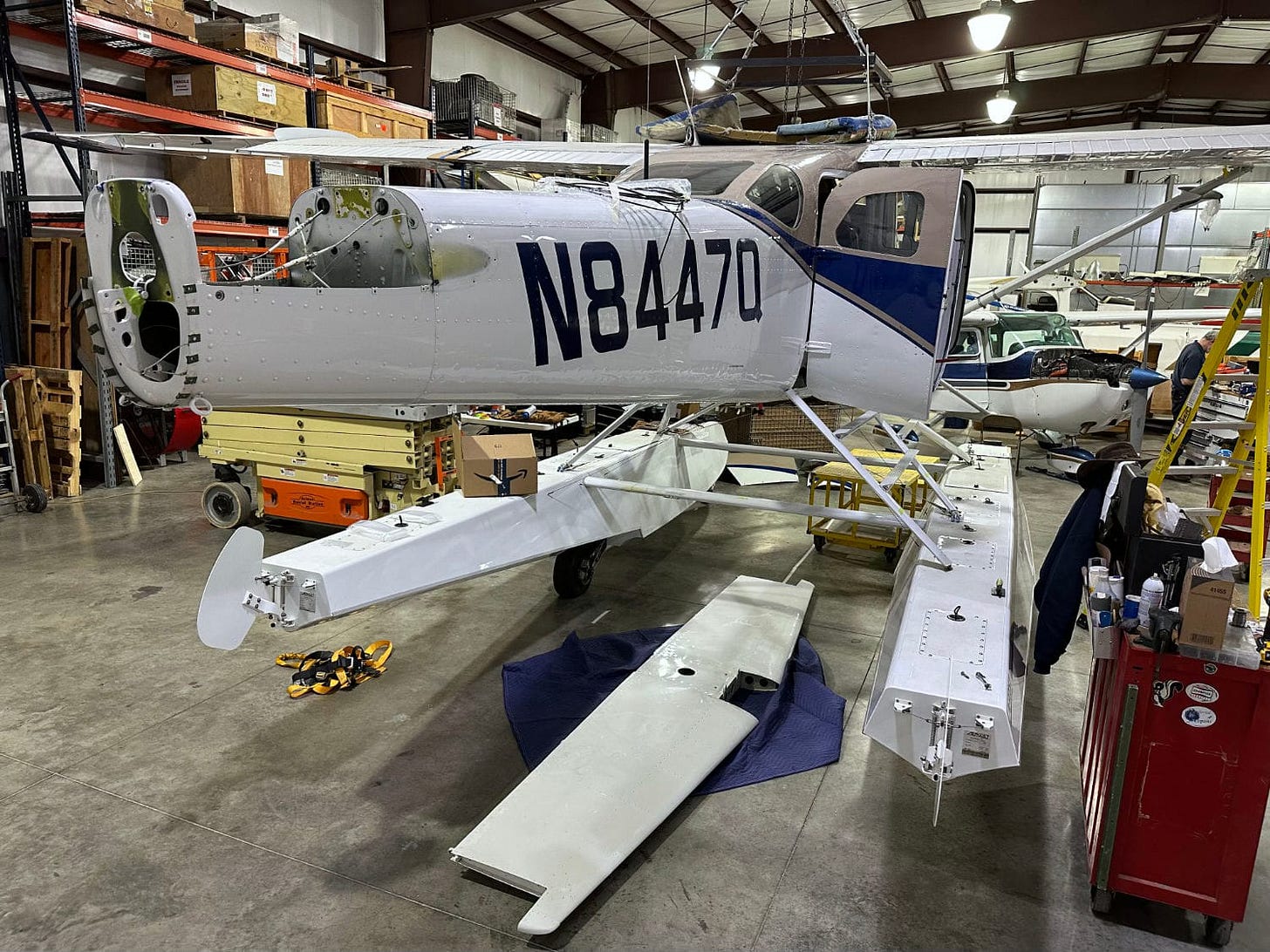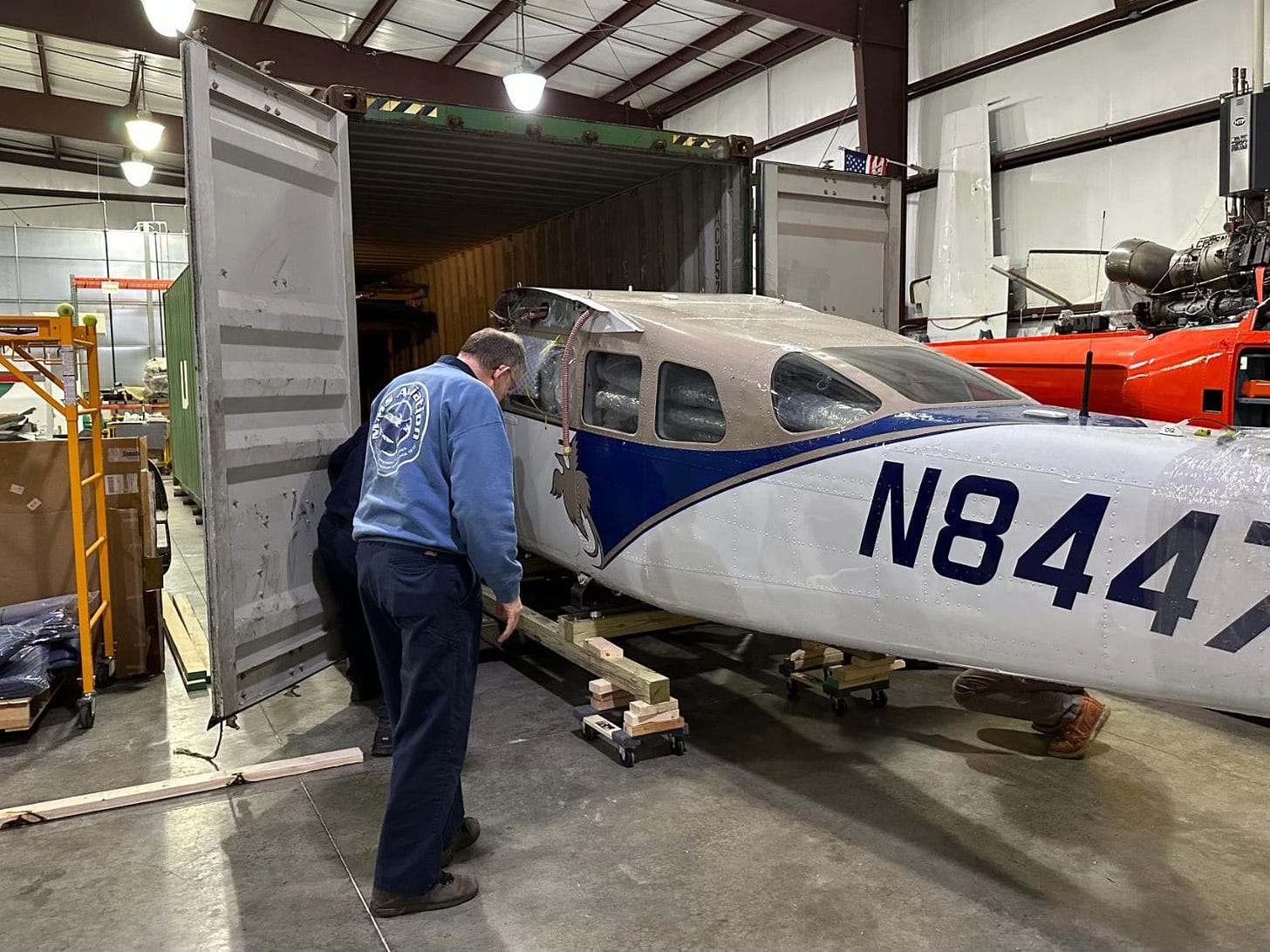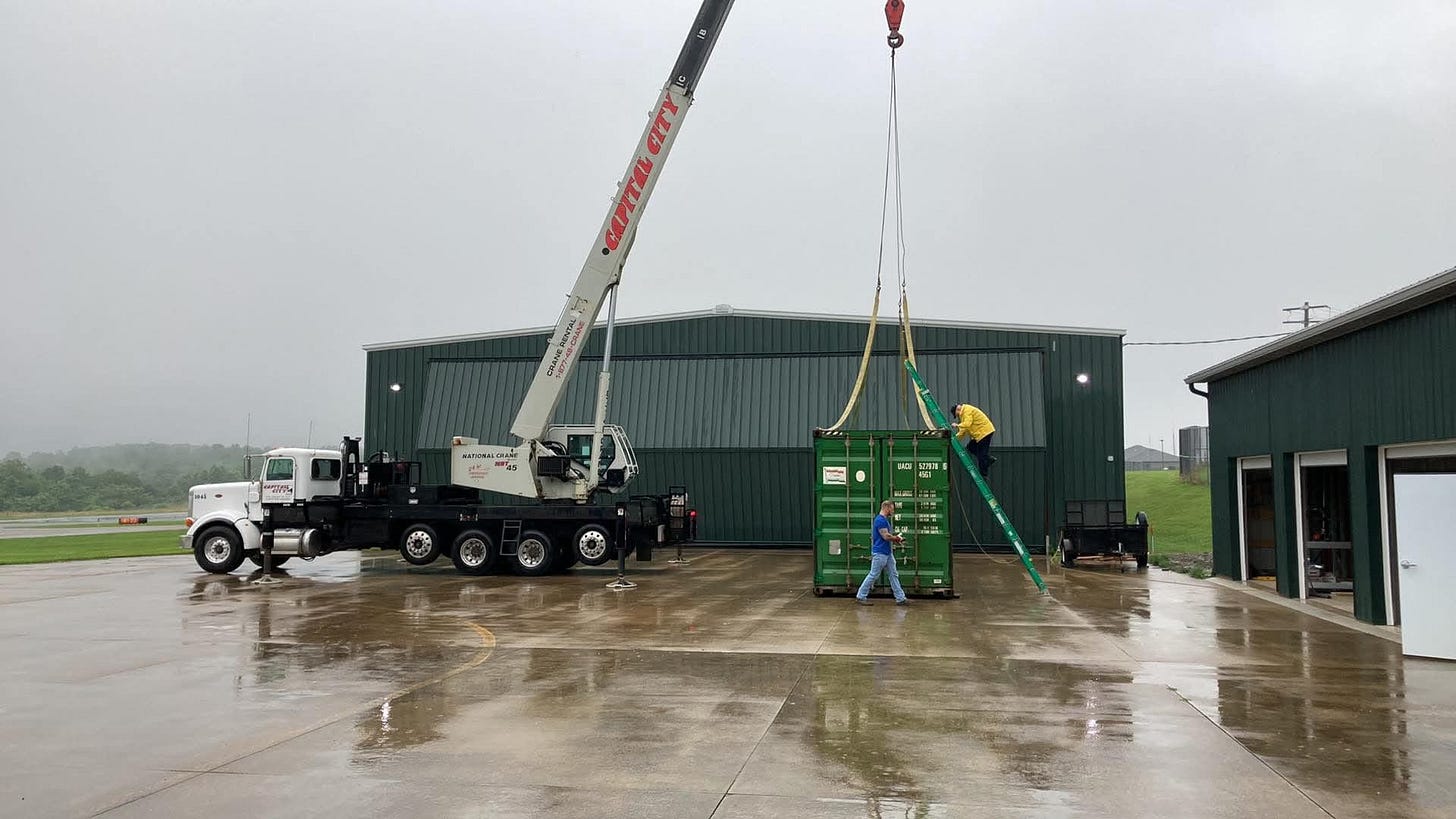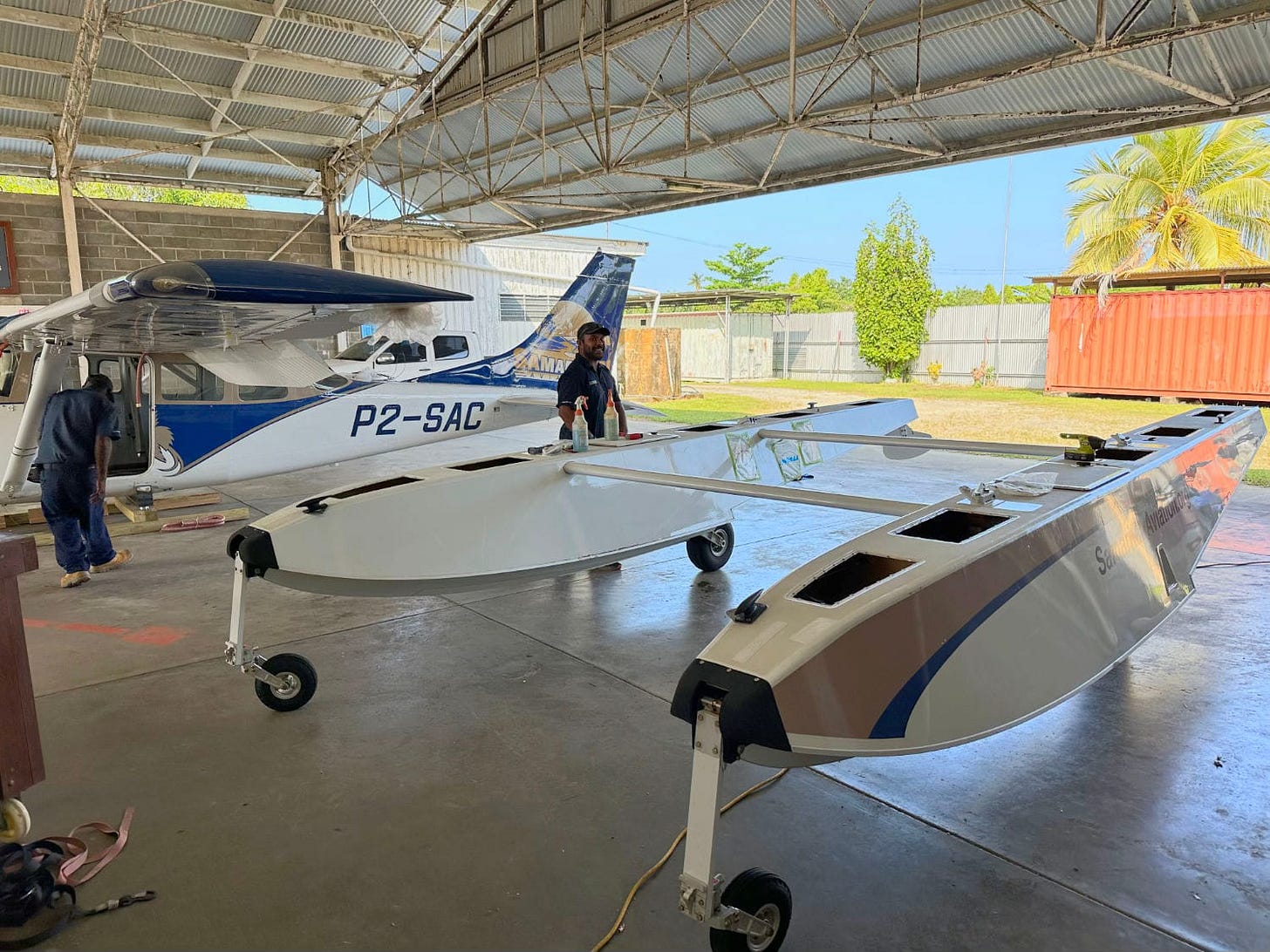Packing A Floatplane Into A Container And Shipping It To Papua New Guinea
I help disassemble a floatplane, put it into a container, and ship it to Papua New Guinea where it gets reassembled so it can support medivacs in remote villages.
The container has arrived, and with it much rejoicing and a lot of work. Rejoicing because the container had in it a lot of our stuff, like Adi and Elliot's school curriculum (the school year has been delayed because we were waiting for it) and a lot of hard work because now we're putting an airplane together.
Shipping a container is kind of like participating in an egg drop contest. You know, when you package an egg and then compete to see how high you can drop it without breaking it. Except in this case the egg is an airplane (along with other odds and ends) and you don't get more than one try to get it right. Turns out we didn't need any packaging because all the red tape slowed down the container so much, we got tired of waiting for it to hit Papua New Guinea soil. It’s finally here and all is well, except for one bent trim actuator which is unfortunate but acceptable, considering how badly it could’ve gone.
The container was shipped from MMS Aviation in Ohio where I helped disassemble the airplane and package into the container. It was really neat to be on both the sending and receiving end of the project. It also gave me more motivation to pack it well because I knew who would be helping to fix it if it was broken: me!
To disassemble or assemble a Cessna 206 on floats, you need to suspend the entire airplane in the air from four eye-bolts on the top of the fuselage. It can be a challenge to do that.
At MMS, the leadership team carefully calculated the bearing load of the hangar beams. They bought a new chain hoist for the project. Several meetings were convened as the process of hoisting the entire airplane from the ceiling of the hangar, disassembling it, and packaging it was discussed. Napkins were assaulted with pens. Whiteboards were struck with dry erase markers. We came up with a plan after sorting through one hundred different available options.
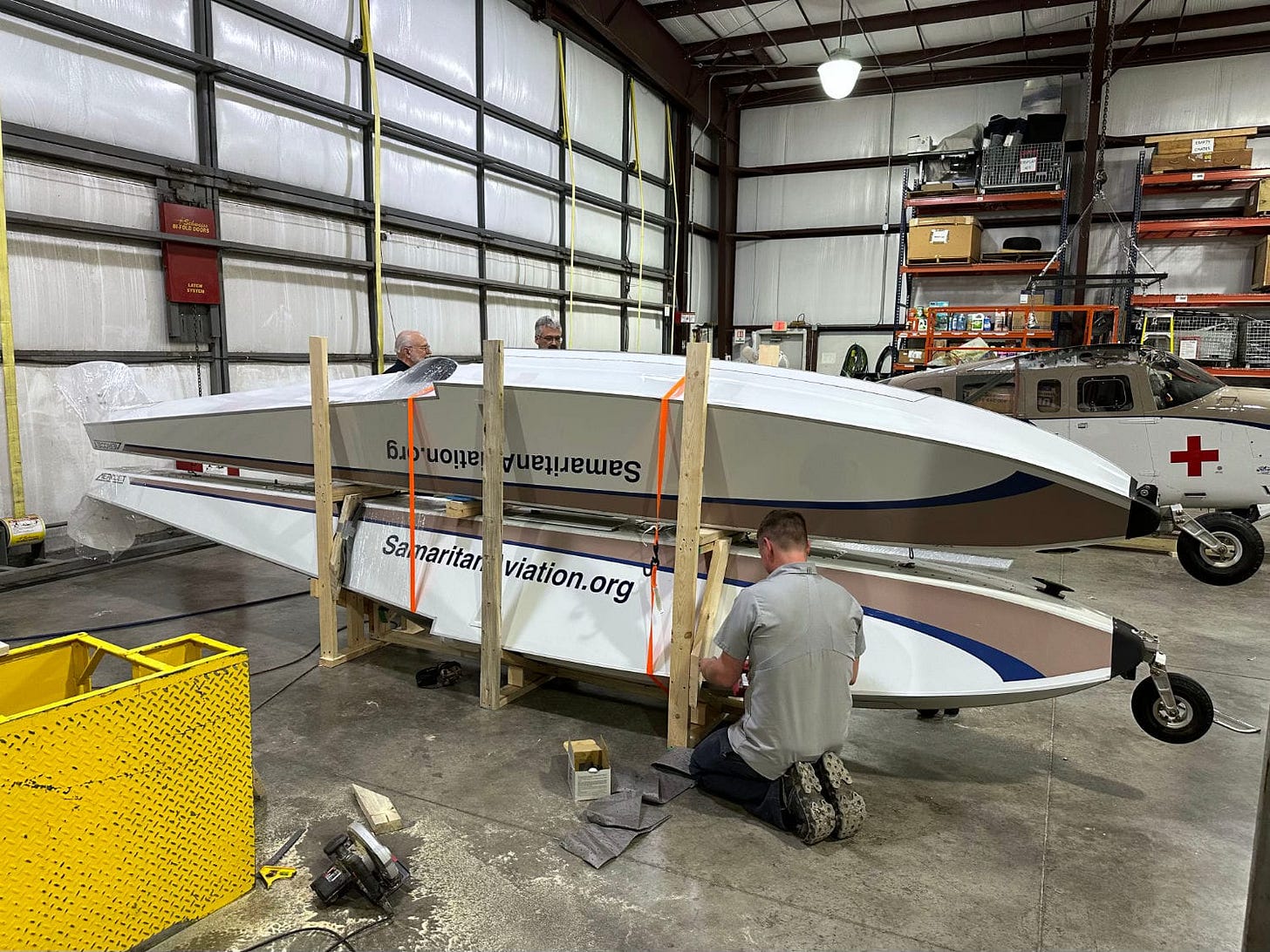

About eight months later...
In Papua New Guinea, we were left with the only plan available. It was kind of like looking in the fridge for something to eat. You're looking for steak but after opening and closing the door several times, you find yourself gnawing on a stiff slice of week old pizza.
We started out by sizing up our hangar rafters and asking each other if we thought we could hang an airplane from it without the hangar collapsing. Nick even climbed up to get a closer look at metal beams and after a few loving pats of the rafters caused a snowfall of peeling paint and rusty debri, we decided to move on to another option. Next we were going to rent a big old crane from a Chinese construction company next door. It was originally available but after the container was delayed multiple times (and months), that option was no longer available. Then we tried to rent a crane from the Yugoslavians who helped build the hospital. Then it came down to a Nick having a conversation with a man he found in a parking lot who had a glorified pickup with a crane on it.
"Could your crane lift that car?" Nick said, pointing to a car that he estimated was about the same weight as a Cessna 206.
"Yes."
"Can you come by the hangar at 1?"
This was the first time the man was attempting to lift an airplane with his crane and he did a fine job except for the few times when he went down instead of going up. Even the most stoic mechanic will leap around and shout like a spirit-filled Pentecostal if the airplane goes down when it was supposed to go up. That same thing goes for pilots, actually. Still, you can't argue with success, as I like to say, and the airplane is sitting on its floats and is near completion.
I've been learning a lot in the hangar and as much as I want to take off the training wheels, I can't quite yet.
"What's the deal?" you may be asking, "I thought you got your license?"
I got my U.S. license but Papua New Guinea doesn't allow me to directly transfer to their system. The good news is that since I have a foreign license, I don't have to take as many exams.
So once again I'm an apprentice without the ability to sign off my own work. I'm trying to get in the rhythm of studying again to remedy this. At least this time I'm not starting from ground zero. And, truth be told, I'm sure I'll learn things going through the books again.
Thanks to everyone who are enabling us to do this work on behalf of the people of Papua New Guinea.
Help make these stories possible. Our family’s mission service in Papua New Guinea is funded entirely by donations. Donations help us fix missionary airplanes, feed our family, and make the Grumpy Missionary Dad less grumpy.




